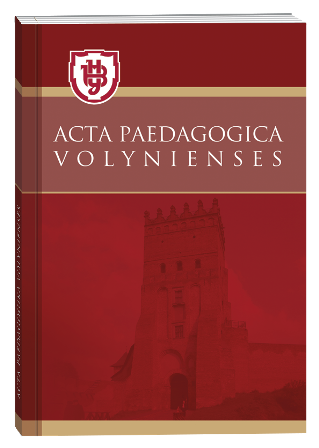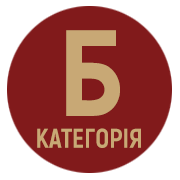FOLLOW-UP IN THE WORK OF THE PRESCHOOL EDUCATION INSTITUTION AND MODERN SCHOOL
DOI:
https://doi.org/10.32782/apv/2021.3.1Keywords:
folowingness, preschool children, primary school children, preschool education, primary education.Abstract
The article reveals the concept of continuity of work of preschool institution and school. The school and the institution of preschool education are two related links in the education system, and their task is to provide quality pedagogical and psychological support, which allows not only to overcome the difficulties that arise in children, but also to ensure their prevention. Continuity in the work of preschool and school should provide guidance and educators of preschool and primary school teachers on joint activities with children, which takes into account the age of the child, encourages creative expression, preserves the uniqueness and originality of a certain period of childhood, provides crisis-free the transition of the preschooler to the position of the personality of the second childhood and at the same time reflects the developmental nature of education. Continuity of preschool and school education helps to ensure the effective gradual development of the child, his successful transition to the next level of education. That is why current trends in preschool and primary education have much in common, in particular, focus on the characteristics of the child, creating favorable conditions for the formation of its proper orientation, self-awareness, positive self-esteem, self-esteem and respect for others, constructive motives , inclinations, needs of character, cognitive, mental processes, etc. The educational process should be aimed at the formation of the child’s personality. All forms of work on continuity create a general favorable background for the development of children both in preschool and in primary school. The task of modern pre-school institution is to prepare children for school workloads and painless transition to study at New Ukrainian School. Continuity provides an organic continuation of development, training and education. And the search for new approaches to this issue contributes to the successful solution of the problems of continuing education. After all, it is extremely important to make the transition from one age step to the next painless for a child, to bring the conditions of development of education and training of senior preschoolers and junior schoolchildren as close as possible.
References
Богуш А. Дошкільна і початкова ланки освіти – сходинки наступності. Педагогічна освіта: теорія і практика. Психологія. Педагогіка. Збірник наукових праць № 28. 2017. С. 23–27.
Жовтовата Н., Клопотенко Н. Наступність між дошкільною та початковою ланками навчання. Початкове навчання та виховання. № 16–18 (416–418) Червень 2015. С. 2–4.
Казанцева Л. Наступність у роботі дошкільного закладу освіти та початкової загальноосвітньої школи у формуванні мовленнєво-комунікативних навичок дітей. Збірник наукових праць БДПУ. Бердянськ. 2002. С. 84–91.
Ковшар О. Забезпечення принципу наступності дошкільної та початкової освіти в державних стандартах – БКДО та ДСПО. Дошкільна освіта: проблеми, пошуки, інновації: збірник наукових і навчально-методичних праць / За заг. ред. Ковшар О., Трусової А. Кривий Ріг : КДПУ, 2018. Вип. 7. 353 с.
Кононко О. Виховуємо соціально компетентного дошкільника. Київ : Світич, 2009. 208 с.
Савченко О. Наступність і перспектива в роботі двох перших ланок освіти. Дошкільне виховання. 2000. № 11. С. 4–5.
Тарасенко Г. Організація дитячої ігрової діяльності в контексті наступності дошкільної та початкової освіти / За ред. Г. Тарасенко. Київ : Видавничий дім «Слово», 2010. 320 с.







